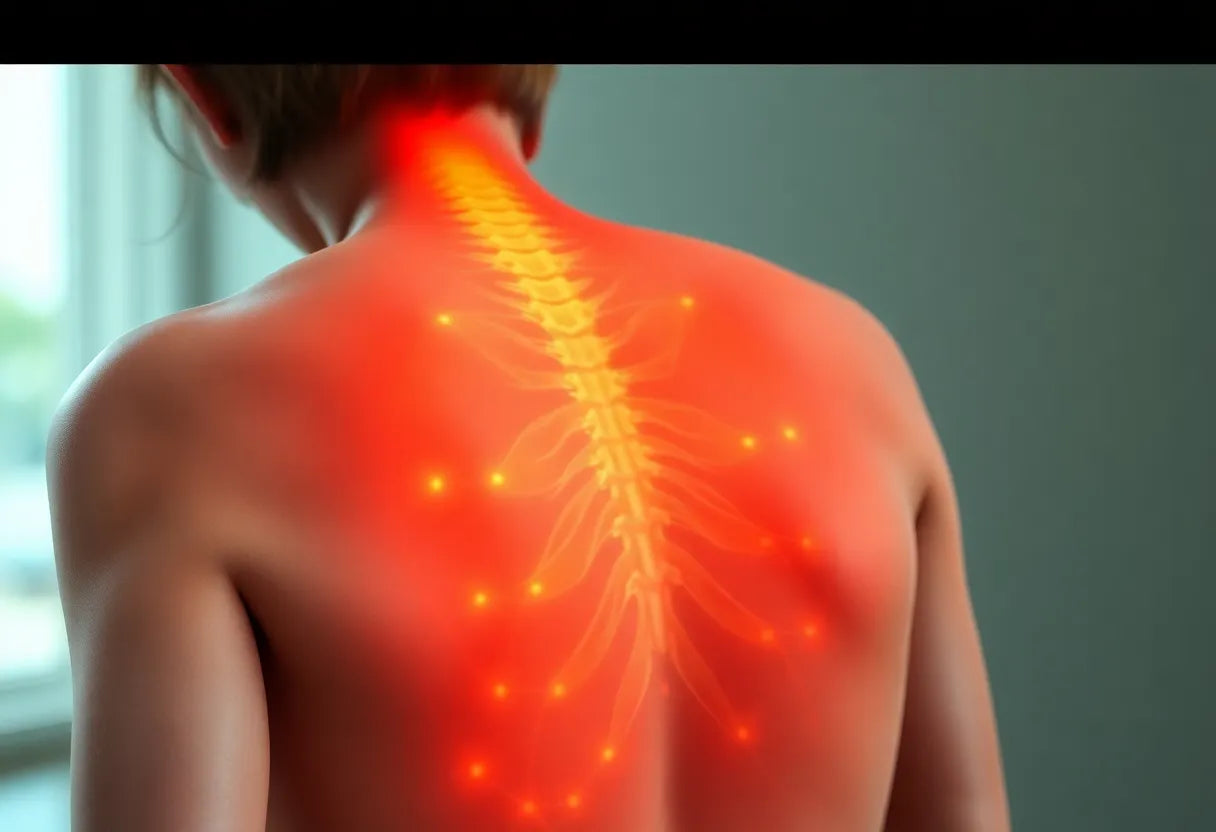Living with sciatica can be a daily battle, as this condition often manifests as a sharp, radiating pain that travels from the lower back down through the leg. The root cause of this discomfort lies in the irritation or compression of the sciatic nerve, the longest nerve in the body. When this nerve is aggravated, it can lead to a range of symptoms, from mild tingling to debilitating pain.
understanding the causes of sciatica
Several factors can contribute to the development of sciatica. One of the most common causes is a herniated disc, where the cushioning material between the spinal vertebrae protrudes and presses against the nerve. Spinal stenosis, a narrowing of the spinal canal, can also lead to nerve compression. Additionally, piriformis syndrome, which involves the piriformis muscle in the buttocks irritating the sciatic nerve, is another potential trigger for sciatica. Understanding these underlying causes is crucial in addressing the condition effectively.
the impact of sciatica on daily life
Sciatica can significantly disrupt daily activities and overall quality of life. The pain and discomfort can make simple tasks, such as walking or sitting, challenging. This can lead to reduced mobility and a reluctance to engage in physical activities, which can further exacerbate the condition. The constant pain can also affect mental well-being, leading to frustration and decreased motivation. However, by adopting simple, consistent daily habits, individuals can manage sciatica symptoms and improve their quality of life.

Lumbar support belt
Støtter og stabiliserer lænden – ideel ved iskias, diskusprolaps og lændesmerter.
purpose of the blog post
This blog post aims to empower readers with practical, evidence-based strategies to alleviate sciatica pain. By integrating these habits into daily routines, individuals can experience long-term relief and regain control over their lives. From self-care techniques to lifestyle adjustments, the strategies discussed here are designed to provide lasting benefits, helping those affected by sciatica to lead more comfortable and active lives.
self-care and non-prescription options for sciatica pain relief
Managing sciatica pain often begins with simple self-care strategies that can be integrated into daily routines. One of the most crucial aspects is maintaining activity levels. Contrary to the old belief that bed rest is beneficial, modern medical advice emphasizes the importance of gentle movement. Activities such as walking, swimming, and yoga are excellent for keeping the body flexible and preventing stiffness. These activities promote circulation and help in the healing process by reducing inflammation around the sciatic nerve.
cold and heat therapy for immediate relief
Cold and heat therapy are time-tested methods for managing sciatica pain. Initially, applying an ice pack can help reduce inflammation and numb the sharp pain associated with sciatica. This is particularly effective in the early stages of a flare-up. After a few days, transitioning to heat therapy can be beneficial. A warm compress or a hot shower can relax tense muscles and improve blood flow, aiding in faster recovery. It’s important to apply ice or heat for about 15-20 minutes at a time, and always use a protective barrier, like a towel, to prevent skin damage.
gentle stretching to alleviate pressure
Incorporating gentle stretching into your daily routine can significantly help in relieving sciatica pain. Targeted stretches for the lower back, hamstrings, and piriformis muscle can alleviate pressure on the sciatic nerve. For instance, the knee-to-chest stretch and seated piriformis stretch are particularly effective. These stretches should be performed slowly and gently to avoid further irritation. Consistency is key, so aim to include these stretches in your daily routine to maintain flexibility and reduce pain.
improving posture for long-term benefits
Good posture plays a vital role in managing sciatica pain. Poor posture, especially during prolonged sitting, can exacerbate symptoms. Ensuring that your workspace is ergonomically sound can make a significant difference. Consider using lumbar support cushions and adjustable chairs to maintain the natural curve of your spine. When sleeping, opt for a supportive mattress and pillows that align the spine properly. These adjustments can prevent unnecessary strain on the sciatic nerve, providing long-term relief.

Men's Posture Shirt™ - Black
Patenteret teknologi til aktiv muskelstøtte – lindrer ryg- og lændesmerter.
medical management of sciatica
For more persistent sciatica pain, over-the-counter medications can be a practical solution. Non-steroidal anti-inflammatory drugs (NSAIDs) like ibuprofen and naproxen are commonly used to manage pain and inflammation. However, it's essential to use these medications as directed to avoid potential side effects such as gastrointestinal issues.
In cases where over-the-counter options are insufficient, prescription medications may be necessary. Muscle relaxants, antidepressants, and anticonvulsants can be prescribed to manage severe pain. Additionally, corticosteroid injections may be recommended for acute pain relief, reducing inflammation directly at the site of nerve irritation. It's crucial to consult a healthcare provider to explore these options and determine the best course of action.
alternative and adjunct therapies
Beyond conventional treatments, alternative therapies like acupuncture and chiropractic manipulation can complement your sciatica management plan. Acupuncture may help by releasing endorphins and reducing nerve signaling, although multiple sessions are often required. Chiropractic care, on the other hand, can improve mobility and reduce pain through spinal adjustments. While these therapies are generally safe, it’s important to seek practitioners with experience in treating sciatica.
Massage therapy is another adjunct therapy that can provide temporary relief by relaxing tight muscles and improving circulation. While it’s not a standalone solution, it can be an effective part of a comprehensive pain management strategy. Consider integrating these therapies into your routine, but always discuss them with your healthcare provider to ensure they align with your overall treatment plan.
integrated care pathway for sciatica relief
Effective management of sciatica often involves an integrated care pathway, beginning with non-invasive, low-risk options and moving towards medical treatments if necessary. Emphasizing regular movement and consistent home care is crucial in managing sciatica symptoms. Incorporating daily habits such as gentle stretching, ergonomic adjustments, and staying active can prevent flare-ups and promote long-term relief. By starting with these foundational strategies, individuals can often manage their symptoms effectively without the need for more invasive interventions.
lifestyle adjustments for long-term sciatica relief
In addition to immediate pain management techniques, lifestyle adjustments play a vital role in preventing sciatica flare-ups. Regular exercise, tailored to individual capabilities, can strengthen core muscles and improve flexibility, reducing the likelihood of nerve compression. Creating an ergonomic workspace with supportive seating and proper desk height can minimize strain on the back. Mindfulness practices, such as meditation and deep breathing, can also help manage stress and tension, which are often linked to pain perception. Furthermore, maintaining a balanced diet and staying hydrated supports overall nerve health, contributing to long-term relief.
frequently asked questions
What is the fastest way to relieve sciatica pain?
For quick relief of sciatica pain, applying cold therapy can help reduce inflammation and numb the affected area. Non-steroidal anti-inflammatory drugs (NSAIDs) like ibuprofen can also provide temporary relief. However, for lasting relief, it is important to incorporate consistent daily habits such as stretching and posture improvement.
When should I see a doctor for sciatica?
It is advisable to consult a healthcare professional if you experience severe pain, loss of bowel or bladder control, or weakness in the legs. These symptoms may indicate a more serious condition that requires medical attention.
Can sciatica be cured permanently?
While sciatica can often be managed effectively with lifestyle changes and self-care strategies, the underlying causes may require ongoing attention. In some cases, medical intervention may be necessary to address specific issues contributing to nerve compression.
Are there any exercises to avoid with sciatica?
High-impact activities or exercises that exacerbate pain should be avoided. It is recommended to consult a physical therapist for personalized guidance on safe exercises that can help alleviate symptoms without causing further irritation.
conclusion
Adopting simple daily habits is essential for managing sciatica pain effectively. By integrating these strategies into your routine, you can achieve long-term relief and improve your quality of life. Always consult with healthcare professionals to tailor your approach and ensure that your treatment plan aligns with your specific needs.
Källor
- ClinicalTrials.gov. (2000). "Study NCT00009672: Sciatica Treatment Study."
- American Academy of Family Physicians. (2015). "Management of Sciatica." American Family Physician.
- Stafford, M.A., Peng, P., & Hill, D.A. (2007). "Sciatica: A Review of History, Epidemiology, Pathogenesis, and the Role of Epidural Steroid Injection in Management." British Journal of Anaesthesia.
- Ropper, A.H., & Zafonte, R.D. (2018). "Sciatica." StatPearls.
- Mayo Clinic. (2021). "Sciatica: Diagnosis and Treatment."
- CenterWatch. (2022). "Sciatica Clinical Trials."
- Cleveland Clinic. (2021). "Sciatica: Overview and Management."
- Harvard Health Publishing. (2020). "Finding Relief for Sciatica."


















